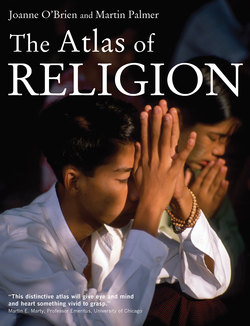Читать книгу The Atlas of Religion - Joanne O'Brien - Страница 34
На сайте Литреса книга снята с продажи.
ОглавлениеThe terms ‘traditional’ and ‘indigenous’ distinguish those cultures and belief systems that are not part of a major world religion. While they often share key features, such as reverence for nature and veneration of ancestors, they do not adhere to any central tenets. Many belief systems – such as Australian aboriginal traditions – have been part of the same geographic setting for thousands of years. Some have travelled and been shaped by what is loosely called Shamanism, thought to have originated in Siberia and to have migrated with movement of peoples into the Americas. The indigenous religion of China, which fuses Daoism, Buddhism, folk religion and Confucianism, is the majority religious practice of the country. In Japan, Shinto rites are widely practised, and even though an individual may profess a different ‘personal’ religion, Shintoism is often the ‘family’ religion. Traditional religion is still widely practised throughout Sub-Saharan Africa. In the Caribbean and Latin America there are more than 3 million adherents of indigenous religions, from the 14,000 strong Huichol community in northern Mexico to the native peoples of the Amazon basin.
Copyright © Myriad Editions Limited
34
